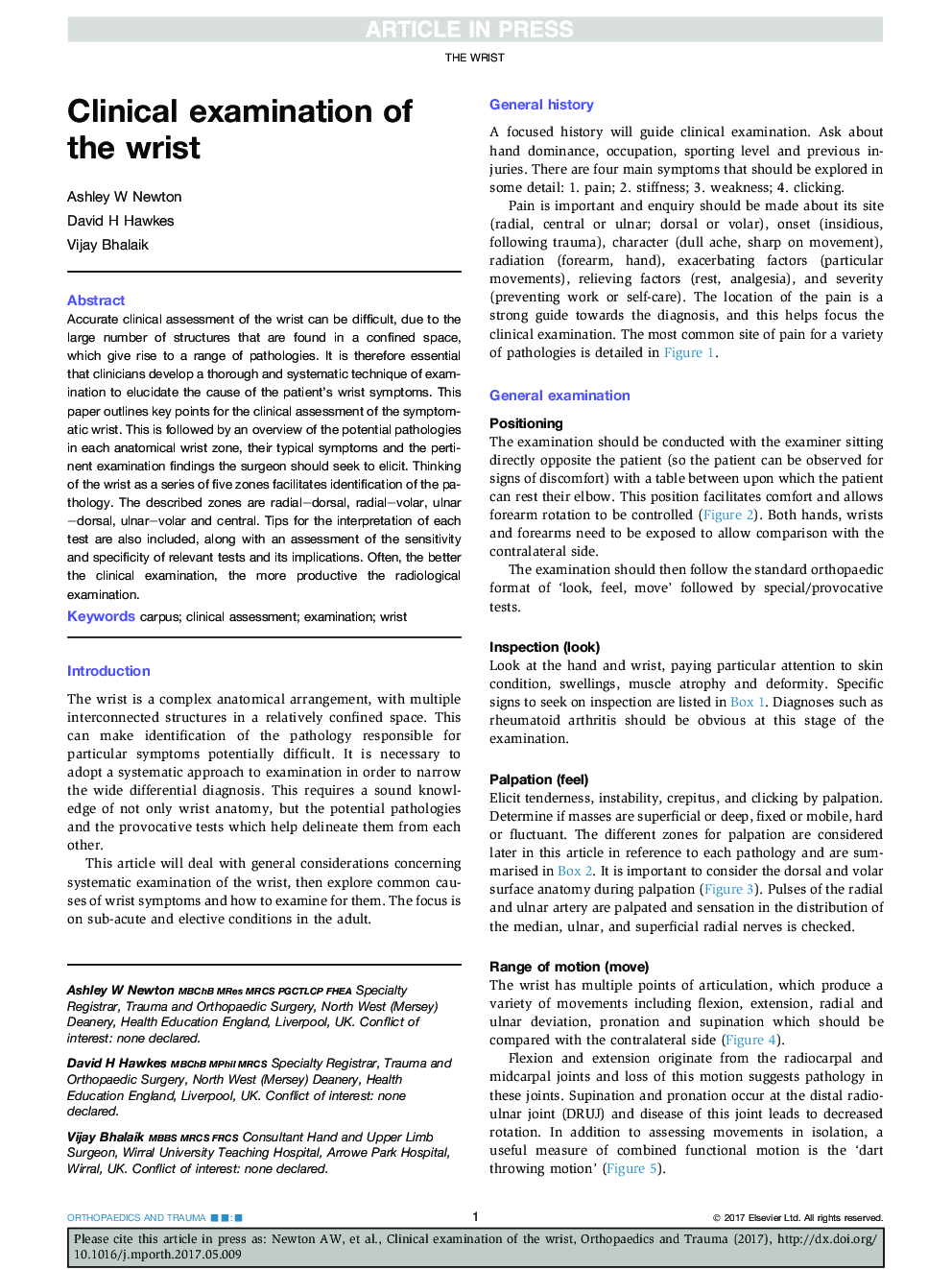| Article ID | Journal | Published Year | Pages | File Type |
|---|---|---|---|---|
| 8802031 | Orthopaedics and Trauma | 2017 | 11 Pages |
Abstract
Accurate clinical assessment of the wrist can be difficult, due to the large number of structures that are found in a confined space, which give rise to a range of pathologies. It is therefore essential that clinicians develop a thorough and systematic technique of examination to elucidate the cause of the patient's wrist symptoms. This paper outlines key points for the clinical assessment of the symptomatic wrist. This is followed by an overview of the potential pathologies in each anatomical wrist zone, their typical symptoms and the pertinent examination findings the surgeon should seek to elicit. Thinking of the wrist as a series of five zones facilitates identification of the pathology. The described zones are radial-dorsal, radial-volar, ulnar-dorsal, ulnar-volar and central. Tips for the interpretation of each test are also included, along with an assessment of the sensitivity and specificity of relevant tests and its implications. Often, the better the clinical examination, the more productive the radiological examination.
Related Topics
Health Sciences
Medicine and Dentistry
Orthopedics, Sports Medicine and Rehabilitation
Authors
Ashley W. Newton, David H. Hawkes, Vijay Bhalaik,
